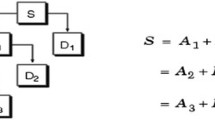Abstract
Watermarking technology can be beneficial in digital rights protection. However, the industry’s acceptance of the technology has been lukewarm as experts have been able to hear audible artifacts introduced during the watermarking process. In this paper, we present what we believe to be a truly inaudible solution to this problem. Our proposed watermarking technique embeds the watermark signal in the phase of an audio signal, with secrecy as to which frequency components carry the watermark bits, achieved via a pseudorandom generator. Inaudibility is realized by exploiting the human auditory system’s insensitivity to absolute phase. Further, our algorithm includes a novel mechanism for segmenting an audio signal into variable frame-lengths to provide robustness against de-synchronization attacks such as jitter and time-scaling. It uses a short-time Fourier transform to first characterize local changes in the frequency content of an audio signal, from which, pairs of frequencies satisfying specified conditions are identified, to mark the start and end of a segment. The insertion of synchronization marks adds further robustness against such attacks. Robustness against other common attacks may be further enhanced through the use of concatenated error-control codes which enable the correction of random and/or burst errors, which may be introduced during an attack.
Similar content being viewed by others
References
Arnold M, Schilz K (2002) Quality evaluation of watermarked audio tracks. In: Proceedings of second international conference on WEB delivering of music, pp 161–167
Byeong-Seob K, Nishimura R, Suziki Y (2002) Time-spread echo method for digital audio watermarking using PN sequence. In: Proceedings of IEEE international conference on acoustics, speech and signal processing, vol.2, pp 2001–2004
Craver S, Wu M, Liu B (2001) What can we reasonably expect from watermark. In: Proceedings of IEEE workshop on applications of signal processing to audio and acoustics, pp 223–226
Elen R (1999) DVD-audio watermarking fiasco continues, audio revolution. http://www.ambisonic.net/watermark.html
Gordy JD, Bruton, LT (2000) Performance evaluation of digital audio watermarking algorithms. In: Proceedings of the 43rd midwest symposium on circuits and systems, Lansing MI, USA
Horvatic P, Zhao J, Thorwirth NJ (2000) Robust audio watermarking based on secure spread spectrum and auditory perception model. In: Proceedings of international federation for info processing, pp 181–190
Kirovski D, Attias H (2002) Audio watermark robustness to desynchronization via beat detection, info hiding workshop
Kirovski D, Malvar H (2001) Robust covert communication over a public audio channel using spread spectrum. Lect Notes Comput Sci 2137:354–368
Kirovski D, Malvar, H (2001) Robust spread-spectrum audio watermarking. In: Proceedings of international conference on acoutics, speech and signal processing, vol 3, pp 1345–1348
Kirovski D, Malvar H (2002) The game of embedding and detecting spread spectrum watermarks under the estimation attack. In: Proceedings of IEEE international symposium on information theory 2002, p 446
Kuo SS, Johnston JD, Turin W, Quackenbush SR (2002) Covert audio watermarking using perceptually tuned signal independent multiband phase modulation. In: Proceedings of international conference on acoustics, speech and signal processing, vol 2, pp 1753–1756
Mansour MF, Tewfik AH, (2001) Audio watermarking by time-scale modification. In: Proceedings of international conference on acoustics, speech and signal processing, vol 3, pp 1353–1356
Pan DA (1995) Tutorial on MPEG/audio compression. IEEE Multimedia Journal 2(2):60–74
Powell D (2001) What is DVD-audio, DVD-audio. World.com, http://www.dvd-audioworld.com/whatis.htm
Rochlin SR (2000) DVD-audio and the internet. Enjoy the Music.Com, http://www.enjoythemusic.com/magazine/viewpoint/0800/dvdaudiointernet.htm
Author information
Authors and Affiliations
Corresponding author
Rights and permissions
About this article
Cite this article
Liew, P.Y., Armand, M.A. Inaudible watermarking via phase manipulation of random frequencies. Multimed Tools Appl 35, 357–377 (2007). https://doi.org/10.1007/s11042-007-0133-8
Published:
Issue Date:
DOI: https://doi.org/10.1007/s11042-007-0133-8




